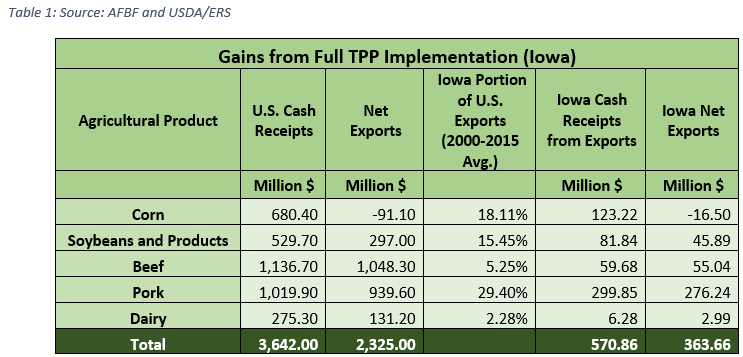TPP Inclusion Overview:
Most trade agreements are of benefit to agriculture commodity exports, and the Trans-Pacific Partnership (TPP) Agreement was no different. More access to markets previously not available due to high trade restrictions can be beneficial to parties interested in the international commodity markets. Of the eleven countries involved in the TPP Agreement, the United States already has existing trade agreements in place with six of them comprising: Australia, Chile, Peru, Singapore, Canada, and Mexico. The other five that do not have existing agreements include Japan, Vietnam, Malaysia, New Zealand, and Brunei.
The Big Question:
• What could have been gained by implementation of the TPP Agreement?
• More specifically, what effect would this trade agreement have had on Iowa Agriculture?
Lost Effects:
Table 1 shows the impact of TPP implementation for both countries who do and do not already have a trade agreement with the United States. The Cash Receipts column for both Iowa and the U.S. represent the domestic cash receipt gains through TPP. The Net Exports column represents, for both the U.S. and Iowa, the total gain or loss (in terms of value) created by TPP. The decrease in net exports of corn occurs because of an increase in the exportation of Beef and Pork. More domestic consumption of corn would be necessary to support the increased livestock production destined for export.

Finally, based on the statements made by the Trump administration, individual trade deals that are able to be more accurately tailored to protect or enhance U.S. industry will be pursued. This, with hopes of having the same benefits of more free trade that arose from the TPP agreement. As these new negotiations occur along with updates to NAFTA, additional analysis will need to be undertaken to decipher new exportation benefits.

